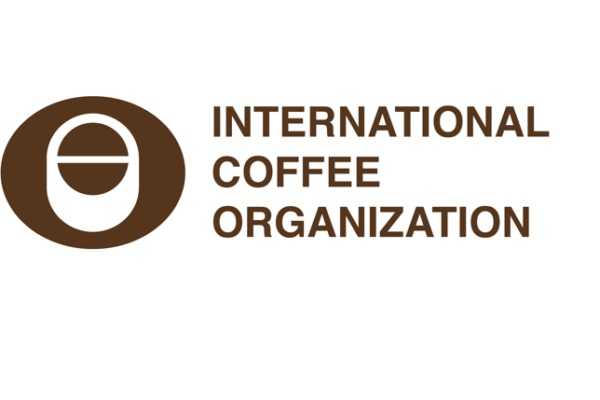LONDON, UK — Robusta prices are getting closer to those of Arabicas, while world exports are soaring to new highs: the new monthly Ico Report shows record figures for coffee prices and exports. The monthly average of the ICO Composite Indicator Price (I-CIP) rose by a further 8.4% in September, reaching a new high of 258.90 cents per lb: 69.1% more than in the same month of 2023. Volatility remained very high (10.5%), although slightly lower than in the previous month.
The trend in the indicators reflects the rally that occurred in both markets in September.
After remaining flat in August, the Robusta indicator resumed its strong upward trend, increasing by 12.8% to 242.08 cents, a figure higher than the average of the composite indicator for the month of August (238.92 cents) and in line with the average of the Brazilian Natural indicator price for the same month (242.19 cents).
The London indicator, in turn, soared 13.8% to 225.68 cents. On the Arabica side, Colombian Milds, Other Milds and Brazilian Naturals rose by 5.9%, 6.5% and 6.2% to 279.27 cents, 278.52 cents and 257.24 cents per lb respectively. The monthly average of the New York indicator was 253.89 cents, up 6%.
Meanwhile, world exports continue to soar under the boost of strong demand from consumer countries. The approaching date of entry into force of the Eudr – eventually postponed – was a further incentive for trade.
The ICO Composite Indicator Price (I-CIP) averaged 258.90 US cents/lb in September, an 8.4% increase from August 2024. The I-CIP posted a median value of 264.57 US cents/lb and fluctuated between 241.20 and 272.70 US cents/lb. The September 2024 I-CIP is above the September 2023 I-CIP by 69.1%, with the 12-month rolling average at 201.71 US cents/lb.
The Colombian Milds and Other Milds increased by 5.9% and 6.5%, reaching 279.27 and 278.52 US cents/lb, respectively, in September 2024. The Brazilian Naturals also appreciated, increasing by 6.2% to 257.24 US cents/lb in September 2024. The Robustas outperformed all groups of coffee, expanding 12.8% to 242.08 US cents/lb. The New York and London ICE markets were drivers of growth, expanding by 6.0% and 13.8% and reaching 253.89 and 225.68 US cents/lb, respectively – the highest point since September 2011 for the Arabica futures, and the highest point since May 1977 for the Robusta futures (nominal prices).
Strong consumer demand continued to apply positive price pressure on the I-CIP as people returned to work in September following the northern hemisphere summer holidays
The rise in climate-related irregularities also contributed to upward pressure on prices via logistical disruptions – Typhoon Yagi not only claimed several lives, but damaged infrastructure and homes through extensive flooding and mudslides.
There has been increased disruption to return flows of empty containers as key shipping routes remain susceptible to the effects of geo-political tensions.
As attacks from insurgents continue to threaten commercial maritime routes in the Bab al-Mandab Strait, shipping lines continue to re-route their operations through the Cape of Good Hope. Also adding to logistical pressure was the news of a potential strike at the US East Coast ports, first heard over the second half of September. The strike ultimately went ahead on 1 October and ended on 3 October.
The Colombian Milds–Other Milds differential shrank from 2.33 to 0.75 US cents/lb between August and September 2024. The Colombian Milds–Brazilian Naturals differential expanded by 2.1% to 22.03 US cents/lb, whilst the Colombian Milds–Robustas differential declined by 24.2% from August to September 2024, averaging 37.20 US cents/lb. Meanwhile, the Other Milds–Brazilian Naturals and Other Milds–Robustas differentials moved by 10.6% and -22.0% to 21.28 and 36.45 US cents/lb, respectively. The Brazilian Naturals–Robustas differential retracted by 44.9%, averaging 15.17 US cents/lb in September 2024.
The arbitrage, as measured between the London and New York futures markets, contracted 31.8% to 28.21 US cents/lb in September 2024, marking its lowest point since March 2003.
The intra-day volatility of the I-CIP retracted by 0.4 percentage points, averaging 10.5% in September 2024. The Colombian Milds’ volatility decreased by 0.1 percentage points. The Other Milds’ volatility grew by 0.2 percentage points to 11.0% whilst the Brazilian Naturals lost 0.1 percentage point, averaging 11.4% in September 2024.
The Robustas’ volatility contracted to 11.3% for the month of September, a 0.8 percentage point decrease. Lastly, New York’s volatility increased by 0.1 percentage points, whilst the London futures market’s volatility decreased by 0.9 percentage points to 12.6%.
The London certified stocks of Robusta coffee declined by 26.5% from August to September 2024, closing the month at 0.74 million bags. Certified stocks of Arabica coffee followed the same trend, going down to 0.87 million 60-kg bags, a 4.2% decrease versus August 2024.
Exports by Coffee Groups – Green Beans
Global green bean exports in August 2024 totalled 9.91 million bags, as compared with 9.11 million bags in the same month of the previous year, up 8.8%. This is the tenth consecutive month of positive growth, resulting in the cumulative total for coffee year 2023/24 to August 2024 being up 10.5% at 113.81 million bags as compared with 102.99 million bags over the same period a year ago. The Robustas was the main group responsible for the overall strong growth seen in August 2024, accounting for 59.8% of the 0.8-million-bags net gain in total exports.
Exports of the Colombian Milds increased by 26.7% to 1.05 million bags in August 2024 from 0.83 million bags in August 2023. The latest jump in the exports was driven by Colombia, the group’s largest producer and exporter, with its August 2024 exports up 27.9% to 0.95 million bags as compared with 0.75 million bags in August 2023.
The cumulative total for the origin is 10.06 million bags, up 16.1% versus the 8.66 million bags exported from October 2022 to August 2023. Exports of the Colombian Milds for the first 11 months of coffee year 2023/24 are up 13.6% at 11.22 million bags, as compared with 9.88 million bags in the first 11 months of coffee year 2022/23.
Shipments of the Other Milds increased by 5.6% in August 2024 to 1.99 million bags from 1.88 million bags in the same period last year. This is the fifth instance of positive growth since the beginning of coffee year 2023/24. The cumulative volume remained up at 2.2% in the first 11 months of said coffee year and is now at 20.91 million bags as compared with 20.46 million bags last coffee year.
Ethiopia, Guatemala and Peru were the three main drivers of the region’s 5.6% growth in exports, with a combined net increase of 0.25 million bags, while Honduras continued to be the main driver of negative growth, with a net decrease of 0.14 million bags. Honduras is currently in the “off-year” of its biennial production cycle, and the cumulative total of the origin’s Other Milds to August 2024 is down 12.9% at 4.46 million bags from 5.12 million bags in the same period a year ago, negatively weighing on the overall export performance of the Other Milds.
Green bean exports of the Brazilian Naturals decreased in August 2024, falling by 0.2% to 3.036 million bags from 3.042 million bags in August 2023. The latest growth is the first negative growth rate in the past 11 months for the group. It mainly stems from the change in the dynamics of the group’s largest producer and exporter, Brazil. In August 2024, exports of Brazilian Naturals from Brazil fell by 6.2% following eight consecutive months of double-digit growth, which had averaged 30.1%.
The sudden change in the direction of the growth rate of the group and origin is in large part due to a base effect. Exports from Brazil in August 2023 were an anomalous 2.62 million bags, the third-largest August exports in history, up 16.0% over August 2022. Coffee year 2023/24 was an “off-year” for Brazil, and as such the volume of exports in August 2023 was expected to be lower, with historic data suggesting that Brazil would export 2.24 million bags.
However, the knock-on effect of the frost in 2021 turned it into a good “off-year” for Brazil, resulting in a higher-than-expected volume of exports. Furthermore, in August 2024 Brazil faced significant challenges in exports logistics, with 86% of shipments subject to delays and changes in schedules as compared with 60% in August 2023 at the port of Santos, the largest port for coffee exports. The Brazilian Naturals saw only a shallow downturn in August, mainly due to the 64.0% increase in exports from Ethiopia, which had a net gain of 0.16 million bags. For the first 11 months of coffee year 2023/24, green bean exports of the Brazilian Naturals amounted to 38.22 million bags, up 21.4% from 31.49 million bags over the same period a year ago.
Green bean exports of the Robustas were up 14.3% to 3.84 million bags in August 2024 from 3.36 million bags in August 2023. As a result, the growth rate of the cumulative total accelerated, increasing to 5.6% in August 2024 from 4.8% in July 2024, with total shipment at 43.46 million bags as compared with 41.16 million bags in the first 11 months of coffee year 2022/23. The main drivers of August’s double-digit growth rate were Brazil, India and Indonesia, whose combined exports were up 36.2% at 1.66 million bags as compared with 1.22 million bags in August 2023. The three origins accounted for 92.1% of the net gain made by the Robustas in August 2024.
The relatively stronger positive growth rate of the Arabicas has resulted in its share of total green bean exports decreasing to 61.3% in August 2024 as compared with 63.2% in August 2023. For the coffee year to date, the Arabicas’ share was 61.8% in August 2024 versus 60.0% in August 2023.
Exports by Regions – All Forms of Coffee
Exports of all forms of coffee from Asia & Oceania increased by 6.2% to 2.93 million bags in August 2024. This is the first positive growth rate in the past four months and it was mainly driven by Indonesia and India. The region’s second- and third-largest producers and exporters saw their respective exports increase by 26.3% and 31.3% to 0.89 million bags and 0.57 million bags as compared with 0.68 million bags and 0.45 million bags in August 2023.
Together the two origins accounted for 82.9% of the region’s 0.17-million-bag net rise. Vietnam, Asia & Oceania’s largest producer and exporter of coffee, saw its exports fall by 12.1% in August 2024 to 1.3 million bags from 1.44 million bags. The latest downturn marked the ninth in total and seventh consecutive decline for Vietnam in coffee year 2023/24, and as a result the country’s cumulative exports up to August 2024 fell to 24.09 million bags from 27.4 million bags between October 2022 and August 2023, down 12.1%. The latest decrease continues to be due to tightness in domestic supply, which is waiting for new supply from the 2024/25 harvest, the start of which is still one month away.
Exports of all forms of coffee from Africa increased by 29.5% to 1.75 million bags in August 2024 from 1.35 million bags in August 2023. As a result, the cumulative total for the first 11 months of coffee year 2023/24 is 14.62 million bags, up 17.3% compared with the 12.46 million bags shipped in coffee year 2022/23. Ethiopia was the main driving force behind the region’s growth in August 2024, with the origin’s exports having increased by 62.4% to 0.6 million bags as compared with 0.37 million bags in August 2023. Ethiopia had accounted for 57.5% of Africa’s August 2024 net rise. Côte d’Ivoire and Uganda were secondary positive drivers of Africa’s double-digit growth in August, combining to account for 43.2% of the 0.4-million-bag net rise of the region, increasing by 48.5% and 4.5%, respectively.
In August 2024, South America’s exports of all forms of coffee increased by 8.6% to 5.41 million bags. As a result, the cumulative total of 59.84 million bags for the first 11 months of coffee year 2023/24 is up 30.5% as compared to the 45.85 million bags shipped in coffee year 2022/23. Colombia was the source of the strong positive growth of the region, which saw its exports increase by 13.4% in August 2024 to 1.04 million bags from 0.83 million bags in August 2023. As a result, the origin accounted for 52.9% of South America’s 0.43-million-bag net rise in August 2024. Much of the gains made by Colombia in August were down to the base effect, reflecting the historically low exports in August 2023, when 0.83 million bags were shipped. The average exports in August from 2017 to 2021 were 38.0% higher, at 1.14 million bags. Peru accounted for 31.8% of the net rise of the region, with August 2024 exports at 0.55 million bags, up 30.0%. This brings the cumulative total for Peru for the first 11 months of coffee year 2023/24 to 3.83 million bags from 2.37 million bags in the same period a year ago. Exports from Peru are enjoying the benefits of its on-years in the biennial production cycle.
In August 2024, exports of all forms of coffee from Mexico & Central America were down 28.7% to 0.83 million bags, as compared with 1.16 million in August 2023. As a result, cumulative total exports remain down at −10.3%, having decreased to 12.88 million bags, as compared with 14.36 million bags for the same period a year ago (October 2022 to August 2023). Honduras was, once again, the main negative driver of the region’s exports performance in August 2024. Exports from Honduras continue to be hampered by its off-years in the biennial production cycle, said exports being down 12.9% to 0.25 million bags in August 2024 from 0.39 million bags in August 2023.
Exports of Coffee by Forms
Total exports of soluble coffee increased by 13.3% in August 2024 to 1.22 million bags from 1.08 million bags in August 2023. In the first 11 months of coffee year 2023/24, a total of 11.79 million bags of soluble coffee was exported, representing an increase of 10.6% from the 10.66 million bags exported in the same period during the previous coffee year.
Soluble coffee’s share in the total exports of all forms of coffee for the year to date was 9.3% in August 2024, the same as in August 2023. Brazil was the largest exporter of soluble coffee in August 2024, shipping 0.33 million bags.
Exports of roasted beans were down 19.7% in August 2024 to 47,730 bags, as compared with 59,417 bags in August 2023. The cumulative total for coffee year 2023/24 to August 2024 is 0.63 million bags, as compared with 0.65 million bags in the same period a year ago.

















